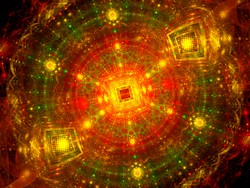Prospects for rare decays at LHC
The large amount of bottom quark-antiquark pairs recorded in LHC experiments opened the door to EU-funded scientists to explore new physics models through flavour-changing neutral currents (FCNCs). In the past, processes generating FCNCs – such as particle-antiparticle mixing and rare meson decays – had played a major role in the construction of the standard model. In the standard model, FCNCs are governed by the Glashow-Iliopoulos-Maiani mechanism that assures their natural suppression as observed experimentally. The NP IN FCNCS AT LHCB(opens in new window) (Exploring new phenomena through flavour changing neutral currents with LHCb) project focused on their sensitivity to contributions from physics beyond this model. Specifically, NP IN FCNCS AT LHCB centred around semi-leptonic transitions of a bottom quark into a strange quark and two muons, all well accessible with LHC experiments. Scientists determined a new set of angular observables in rare decays of neutral B mesons using experimental data recorded in proton-proton collisions during LHC run 1. The results gained considerable attention in the physics community because one angular observable deviated from its standard model prediction. This deviation was calculated equal to 3.4 standard deviations globally. Importantly, the simultaneous determination of these observables allowed correlations between the measured quantities to be computed. Scientists used the findings in global fits to theoretical models. This proved critical to understanding whether the standard model is sufficient to explain discrepancies. Necessary extensions were also pinpointed to the theory that has to date successfully explained almost all experimental results and precisely predicted a broad variety of physical phenomena. Before the end of NP IN FCNCS AT LHCB, the angular analysis of the extremely rare decay of the strange B meson – a composite particle consisting of a bottom antiquark and a strange quark – into two muons was carried out. The new discoveries with these rare decays that provide hints of new physics have been published in high-impact peer-reviewed journals.



